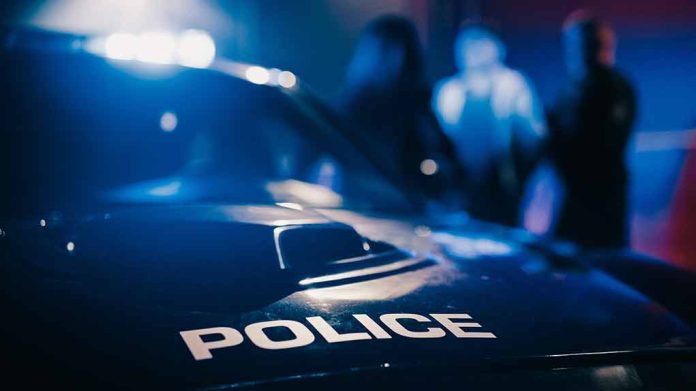
A San Francisco life coach with a criminal past has been charged with murdering four people over two decades in a series of calculated gang-related killings that shocked the Hunters Point community where he posed as a positive role model.
Key Takeaways
- Sauntek Harris, 44, a community activist and life coach in San Francisco’s Hunters Point neighborhood, has been charged with four murders dating back to 2002.
- An accomplice, Shaun Britton, 48, faces one count of murder for his alleged participation in the first killing.
- Prosecutors claim the murders were gang-related, with one victim allegedly killed to prevent him from testifying.
- Harris’s criminal record includes previous convictions for firearm possession and drug-related offenses from 2004.
- Both suspects are currently detained pending trial due to the public safety risk they pose.
Life Coach’s Double Life Exposed
San Francisco authorities have uncovered what they believe is a deadly criminal history hidden behind the respectable facade of a community activist. Sauntek Harris, 44, who worked as a life coach in the Hunters Point neighborhood, was arrested on May 29 and charged with the murders of four men spanning nearly two decades. His alleged accomplice, Shaun Britton, 48, faces one murder charge. The arrests have sent shockwaves through a community where Harris was known as a positive influence, revealing what prosecutors claim was a violent gang member operating beneath a carefully crafted public image.
The San Francisco District Attorney’s Office has outlined a troubling series of killings allegedly committed by Harris, with the first occurring on January 18, 2002. On that date, prosecutors say Harris and Britton robbed, carjacked, and fatally shot Perry Bradstreet with an assault rifle before setting his vehicle on fire to destroy evidence. This brazen murder was reportedly just the beginning of Harris’s violent criminal activities, with prosecutors alleging a direct connection to gang operations in the city’s troubled neighborhoods.
String of Gang-Related Murders
Following the first murder, Harris allegedly embarked on a killing spree that claimed three more lives. On February 24, 2002, he was accused of shooting Lorenzo Richards with a 9mm semi-automatic pistol. The violence continued when, according to prosecutors, Harris murdered Gerald White on July 28, 2002, using a semi-automatic pistol. White was reportedly a witness to a previous crime, and his murder appears to have been an attempt to silence potential testimony in the Bradstreet case, demonstrating the calculated nature of these killings.
“Committed to a criminal street gang and was an act of street terrorism,” stated San Francisco District Attorney’s Office.
After a 17-year gap in the murder charges, Harris allegedly killed again in 2019. On August 10 of that year, prosecutors claim Harris shot Dietrich Whitley with a semi-automatic pistol. Court documents indicate Harris committed this murder while “lying in wait” after reportedly losing a fight to Whitley earlier. This latest murder suggests that despite his public persona as a reformed community member, Harris continued to resolve personal conflicts through deadly violence well into his career as a supposed community leader.
Criminal History and Current Charges
The charges against Harris include not only four counts of murder but also possession of a firearm as a felon. Court records show he had previous convictions for firearm possession and drug-related offenses dating back to January 2004. These earlier convictions raise serious questions about the effectiveness of California’s criminal justice system and how an individual with such a record could successfully reinvent himself as a community leader while allegedly continuing to commit violent crimes.
Both Harris and Britton are currently in custody and have been denied bail due to the extreme public safety risk they are deemed to present. The prosecution’s decision to charge these murders as gang-related adds a significant dimension to the case, highlighting the persistent problem of gang violence in San Francisco and raising concerns about the ongoing influence of criminal organizations in communities already struggling with poverty and limited opportunities. This case exposes the failure of San Francisco’s liberal policies that have allowed violent criminals to operate freely in vulnerable neighborhoods.







